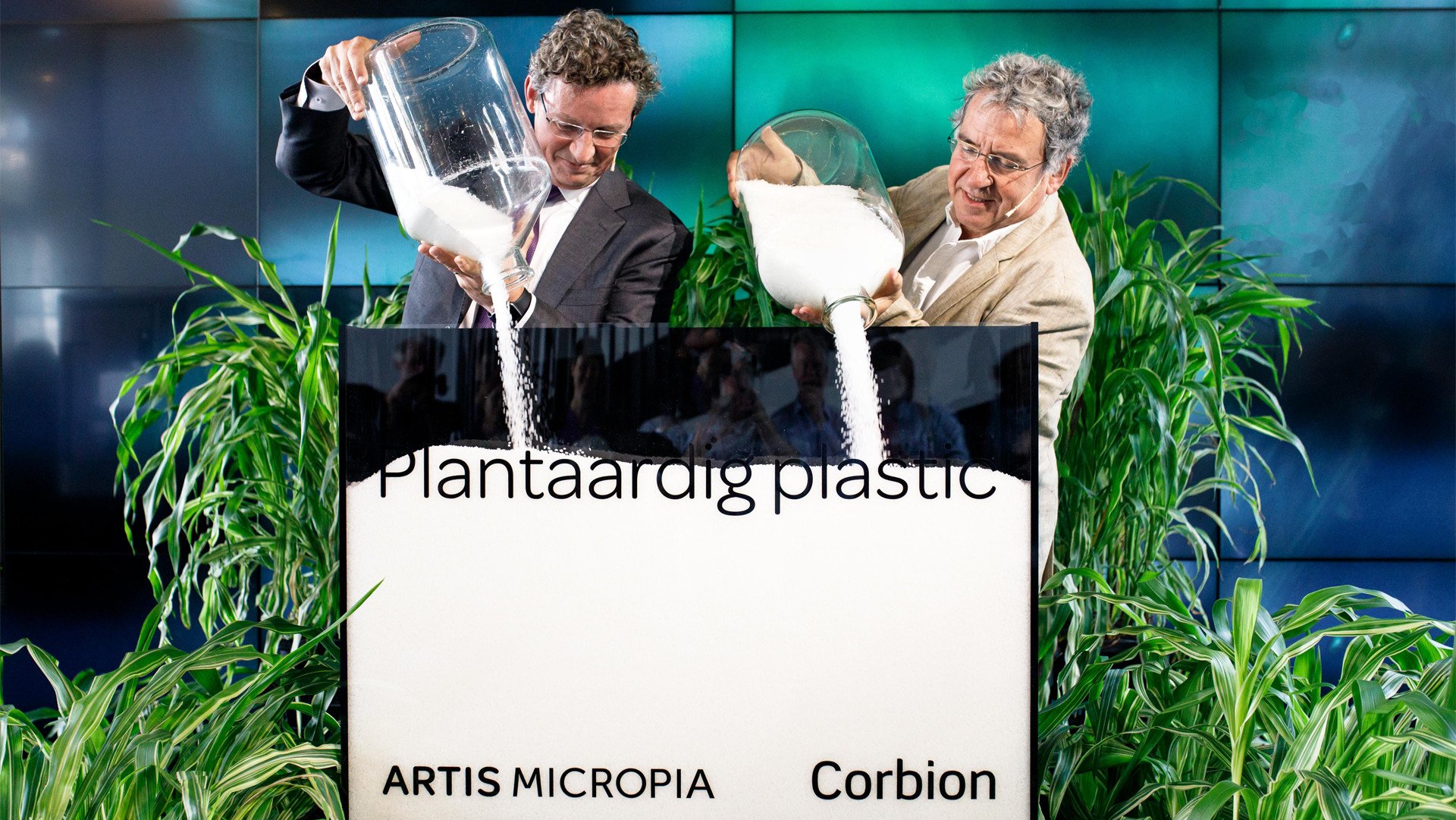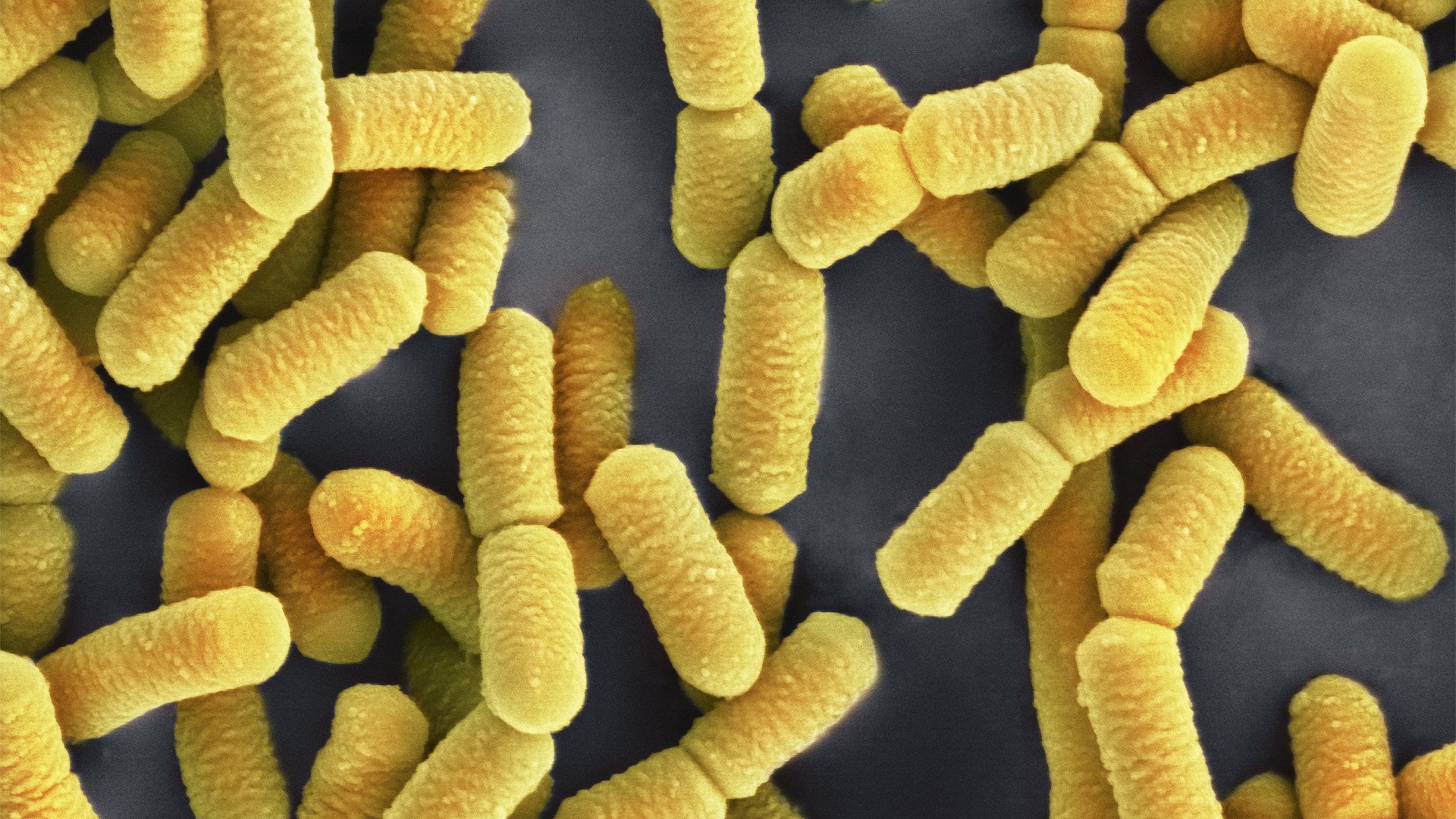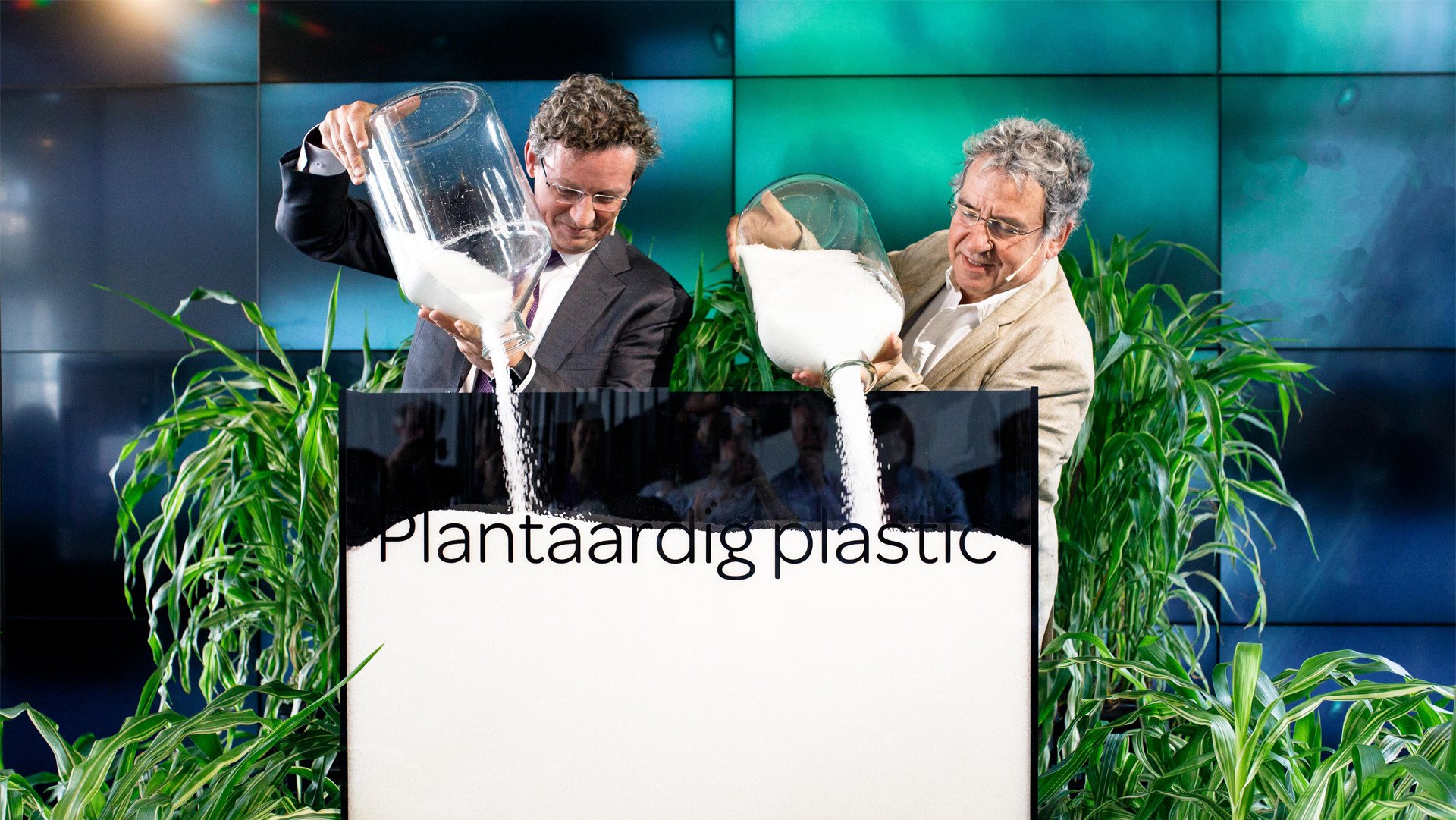Lactic acid bacteria (microbes) transform the plant-based material into a sustainable and innovative alternative to traditional plastic. The interactive exhibition demonstrates how microbes work and can help to reduce part of our plastic problem – namely oil consumption and the release of harmful substances during plastic production. By means of this interactive exhibition, Micropia is showing visitors a sustainable application of microbes which contribute to a circular economy.
ARTIS director Haig Balian (right) and Marcel Wubbolts, Chief Technology Officer of Corbion, reveal the new Bioplastic fantastic exhibition.
Microbes to the rescue
Lactic acid bacteria (such as Lactobacillus), which are also found in the human body, are used to make the bioplastic PLA (Polylactic Acid). The Bioplastic fantastic exhibition is on the lower floor of Micropia, where new applications of microbiology are revealed to the public. The interactive exhibition is a rotating system which illustrates the circularity of the sustainable production and processing of PLA bioplastics. A wide range of objects are brought to life in the animations, telling various stories about the environmentally-friendly nature of PLA.
The various types of PLA have numerous applications, from drinking cups to surgical sutures and screws for repairing fractures. The exhibition also shows that the production of the plant-based bioplastic PLA uses four times less energy than regular plastic. The production of PLA is virtually CO2-neutral as it is made from organic materials. Other properties which contribute to a circular economy include the fact that plant-based plastic can be recycled, composted and reused, as long as it is collected and processed correctly.
Lactic acid bacteria (Lactobacillus)
The lab talk
From 27 June onwards, The lab talk will reveal the role of bacteria in the production and breakdown of plastic at 1 pm and 4 pm every day.

